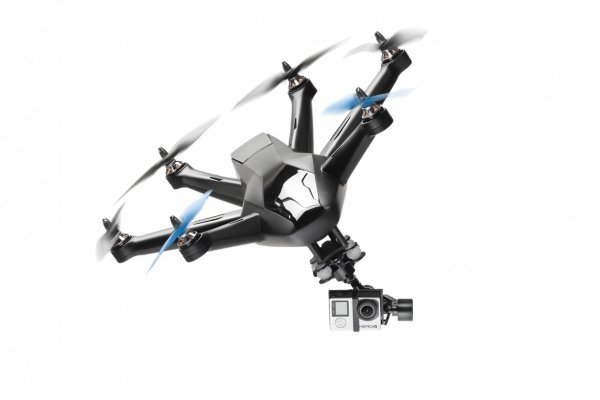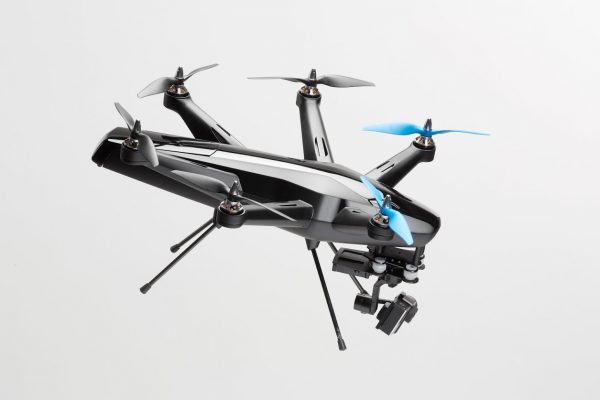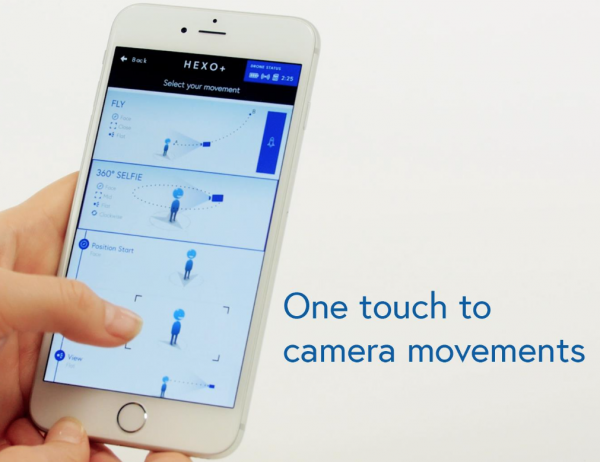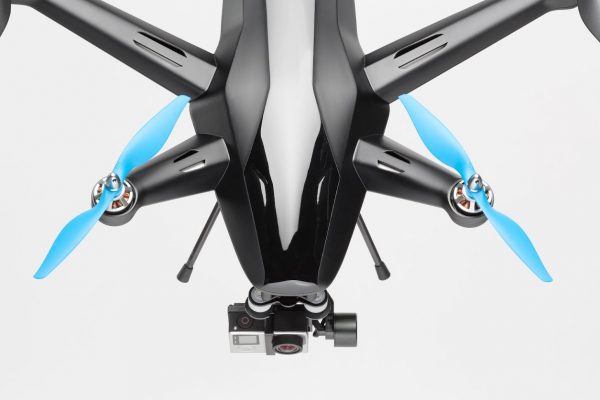By technical editor Matt Allard:
The Hexo+ is yet another autonomous flying system that’s getting very close to being shipped: it’s scheduled to be available in September. The project started off as Kickstarter campaign and raised over $1.3m US, funded by more than 2,000 backers from across the world. It was so successful it’s ranked in the top 20 most successful Kickstarter campaigns. The Hexo+ received rave reviews at CES 2015, winning best Drone of CES by Videomaker and Best of CES by iPhoneLife and Showstopper.
The Hexo+ is capable of auto-following and auto-filming the subject, and can be controlled by using gestures on a smartphone. This autonomous, hands-free process gives the individual the opportunity to be able to film themselves. Although primarily aimed at the action sports crowd, the Hexo+ could be used by filmmakers who want a simple way to get their camera airborne. For news and documentary shooters who want to get an aerial perspective following a subject or a reporter, the Hexo+ looks like it will offer an alternative solution to the popular DJI Phantom series.
The Hexo+ is very similar to the Lily Camera we featured on Newsshooter back in May. Unlike the Lily, the Hexo+ does not come with a camera included, but instead has a 3D gimbal with GoPro Mount so you can use your own GoPro. I think ultimately using a better camera such as a GoPro 4 is what many filmmakers are looking for. It is great to have a built-in option, but if the quality of that camera isn’t up to scratch, filmmakers will quickly look elsewhere.
The unit has a software-limited height restriction of 60m (200 feet) and a flying time of just 13 minutes, which is not very long if your using it for action sports such as snowboarding. The maximum speed of the Hexo+ is 70Kmh (40Mph). The company is clear to point out that you will have to choose paths that are in open areas. You have to anticipate the trajectory of the drone following you, as there is no collision avoidance system included in the first version. Hexo+ is working on a solution to rectify this and there will be a system update once it is fully developed.
This does make using an autonomous drone a real safety concern. If the whole idea is that you’re supposed to let it follow you and forget about it once it’s in the air, the user is very likely to do just that. That means if you happen to be snowboarding for instance and you go through some trees or under the ski lift at the moment there would be nothing to stop the Hexo+ from flying straight into that obstacle. My personal view is that an autonomous drone needs to have more safety requirements built into it than a self-operated one.
Emergency landing and return-to-home will be included at launch, and the company is also planning to add features later. This will help the user deal with situations like losing the GPS signal, or batteries running out on your phone or the drone itself.
The Hexo+ will be able to switch from autonomous to manual control, but the company does not plan on selling an RC controller. If you want to fly the unit manually you will need need to connect to one of the following receivers: PPM RC receiver, Futaba S.Bus receiver,or a Spektrum DSM,DSM2, or DSM-X Satellite receiver. Any RC controller compatible with those will also work.
Design update from Hexo+:
The prototype we just finally assembled is the third major version of the drone since the campaign ended. From September to December, we worked on many variations of a simple frame to define the best position, power and propeller size/shape for the motors, this was a very raw version of the drone. We then produced a more polished version in terms of finishes for CES in early January but the insides were still very DIYesque and it took up to two days to put together each drone. Since January we’ve worked on creating a version that will be the basis for industrial production and the result arrived last week.
The Hexo+ is available for pre-order for $1349 USD (a 10% discount) until June 30th. The kit includes a 3D gimbal with GoPro mount and the HEXO+ App (iOS and Android).









